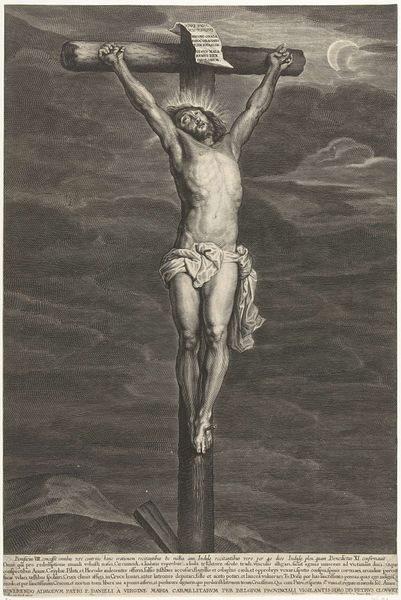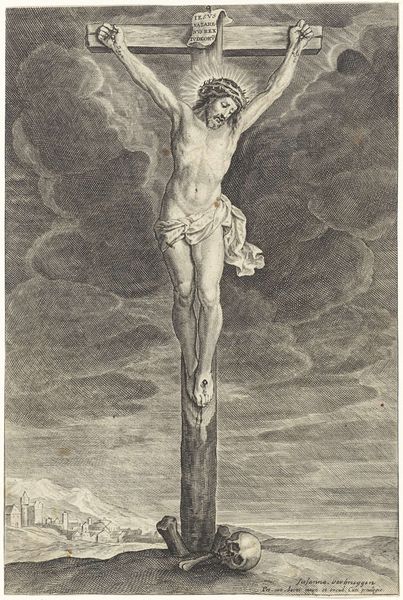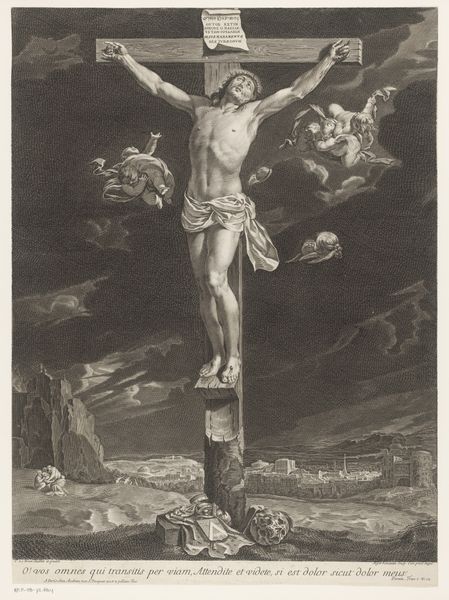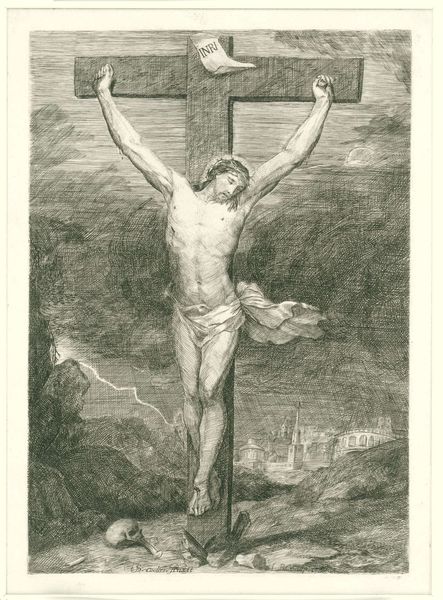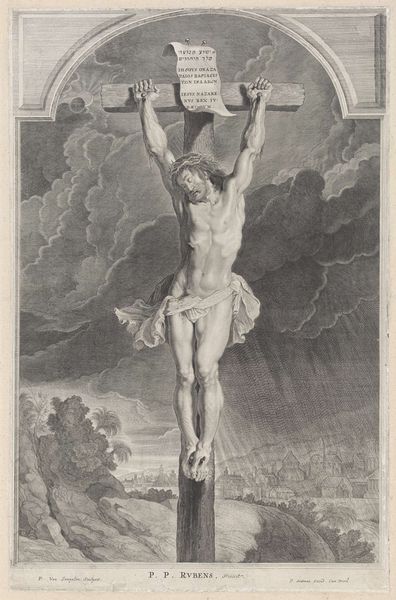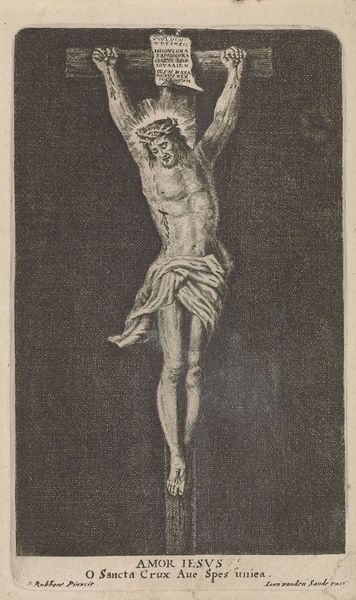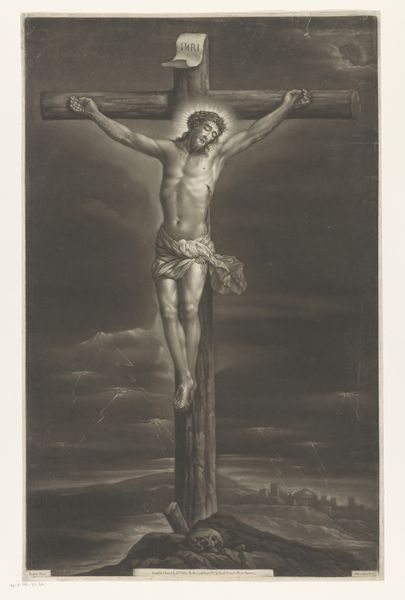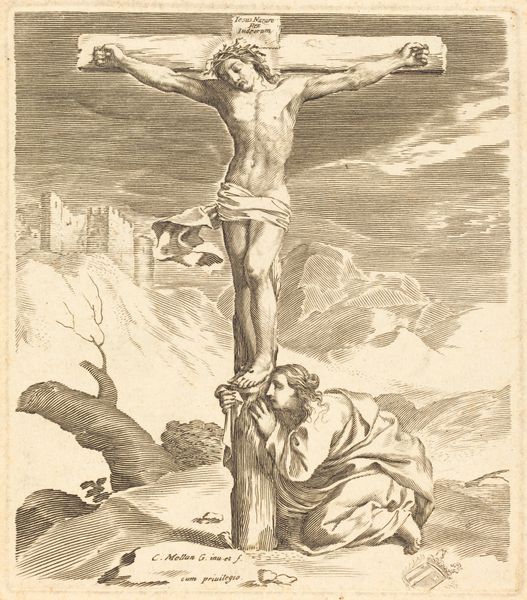
engraving
#
baroque
#
old engraving style
#
figuration
#
history-painting
#
nude
#
engraving
Dimensions: height 235 mm, width 146 mm
Copyright: Rijks Museum: Open Domain
Curator: The somber engraving before us is titled *Christus aan het kruis,* or *Christ on the Cross,* by Jacob Gole. Created between 1670 and 1724, it resides here at the Rijksmuseum. What are your immediate thoughts? Editor: Stark. The darkness really amplifies the vulnerability of Christ. There’s something theatrical about it, heightened by the stylized billowing loincloth. It's interesting to see the baroque emphasis on drama playing out even in a relatively small engraved work like this. Curator: The iconography is, of course, loaded with meaning. The *INRI* inscription at the top of the cross, the crown of thorns, each detail a deliberate attempt to stir particular emotions and reinforce dogma. How does this relate to the role of images within religious power structures of that period? Editor: Absolutely. Consider the setting – Golgotha visualized, Jerusalem faintly in the background – the image does powerful cultural work. Notice the verse beneath the image. "The Savior dies for you, only live for him." This speaks volumes about the socio-political power wielded through imagery. And, this wasn’t a standalone piece, it was meant to be reproduced and widely circulated, driving home the religious narrative through repetition and visual impact. Curator: I'm struck by the artistic interpretation of pain. Look at the hyper-idealized, almost sculptural, form of Christ, yet juxtaposed against the gaunt features and skeletal frame – it is quite striking. The intention isn't simply to depict suffering, but also, paradoxically, to glorify it. It connects to long standing archetypes within Christianity itself. Editor: That tension is central. It represents a real tug-of-war. How does one reconcile the aesthetic ideals inherited from antiquity with the stark realities and intended message of religious suffering? That's part of what gives this piece, and others like it, their continuing power to unsettle. The blend of stylistic drama and political agenda remains potent, raising complex questions. Curator: A thoughtful observation. It's images like this, carrying such layered historical weight and resonating on multiple psychological levels, that stay with us. Editor: Indeed. Art that makes us reflect on both its inherent artistic nature and its role in shaping society is eternally significant.
Comments
No comments
Be the first to comment and join the conversation on the ultimate creative platform.

